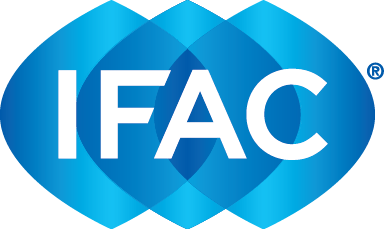Presentation from Rob Falzon, Vice Chairman, Prudential Financial, Inc to IFAC’s Professional Accountants in Business Committee.
 |
Having recently been appointed as vice chairman of Prudential Financial, Inc in December 2018, Rob Falzon shared his reflections on the transition from his previous role as the company’s CFO, his expectations of the finance function in his current role, and the transformation of Prudential’s finance function.
Transition from CFO to Vice Chairman
Reflecting on experiences that helped in his transition from CFO to vice chairman,
Rob highlighted three areas:
- Experience outside of the finance function – having spent his entire career spanning over 30 years at Prudential, Rob has had multiple moves within the company, working in a variety of areas in the investment management business before joining the finance function. Experience working outside of the finance function helped in understanding, and having a perspective of, the business (as opposed to just reporting on the business).
- Focus on impact and legacy of change – it is not enough to only fine tune existing processes. As a CFO his focus was on how the finance function can create value throughout the organization.
- Focus on talent management – recognizing that the only sustainable competitive advantage in the long-run is people, and therefore crucially focusing on recruitment, engagement and retention.
Expectations of the Finance Function from a Vice Chairman
Shifting the finance function from vertical to horizontal means moving beyond only reporting results from the rest of the organization to activities that impact the business and enable it for success. For example, finance involvement in product design and pricing, including both economic evaluation and expressing results of the product to the investor base, regulators and others. At Prudential they have converted expense centers to focus on performance management and measurement.
It is critical to get the books right and reflect the performance of the business accurately. But much of this is now enabled by technology. The finance function needs to explore and utilize tools to effectively achieve the critical and move their talent (and highest cost) to focus on areas that are pivotal to the success of the company.
Other expectations of the finance function are to:
- Move beyond just managing costs to constantly re-evaluating how work is done in a way that frees up capacity and finances to reinvest in growth initiatives for the company. Financing should not come from earnings or capital, it should come from efficiency savings or from stopping activities to invest in those that add more value.
- Take the economics of the business model and ensure these are appropriately reflected in the reported financial results and supporting narrative for constituents. It is easy to lose sight of this–coming up with accounting results, but not reflecting on whether the reporting actually reflects the underlying ‘business economics’. If it does not, the finance function must act, either changing what they do or by changing the reporting. For example, through advocacy with accounting standard-setters and regulators. If an accounting change causes a change in stock price, it becomes economic to investors.
- Focus on talent, in the same way that talent management was a focus for Rob as CFO, he has that expectation of the finance function now.
Finance Function Transformation
Drivers of change:
- Changing customer expectations of products, distribution and customer service. Customer experience is not necessarily judged against others in the same industry, it is evaluated in the context of Amazon for example, where with 2 clicks customers can have a product delivered in 2 days. This has set the bar across all industries.
- Two-dimensional talent gap – number of people vs talent with the right skills. In Prudential there are approx.1,000 open positions in the US alone and attrition creating an additional 1,500 vacancies per year. Talent is needed with the skills to fill pivotal roles not critical roles.
- Competitive pressures–products must compete on a cost basis, therefore there is a need to constantly drive down costs and improve efficiency and productivity.
Tools to address change:
- Technology and digital transformation
- Organization design and outsourcing – instead of replacing 1,000 open positions, is there a way to redesign or outsource so only 500 are needed for pivotal roles?
- Smarter and faster processes–either through use of technology or by simplifying processes
- Talent agenda
- Preparing talent for the future by identifying skills gaps, using advanced workforce planning tools, and training people through a learning academy to address future gaps.
- Apprenticeships–individuals will need to reinvent themselves every 4–5 years. Finding people who possess all the required skills for a role is increasingly challenging and companies will need to provide on the job training to address any skills gaps
- Global mobility program
Taken from the IFAC PAIB Committee report, Future Ready Accountants in Business

